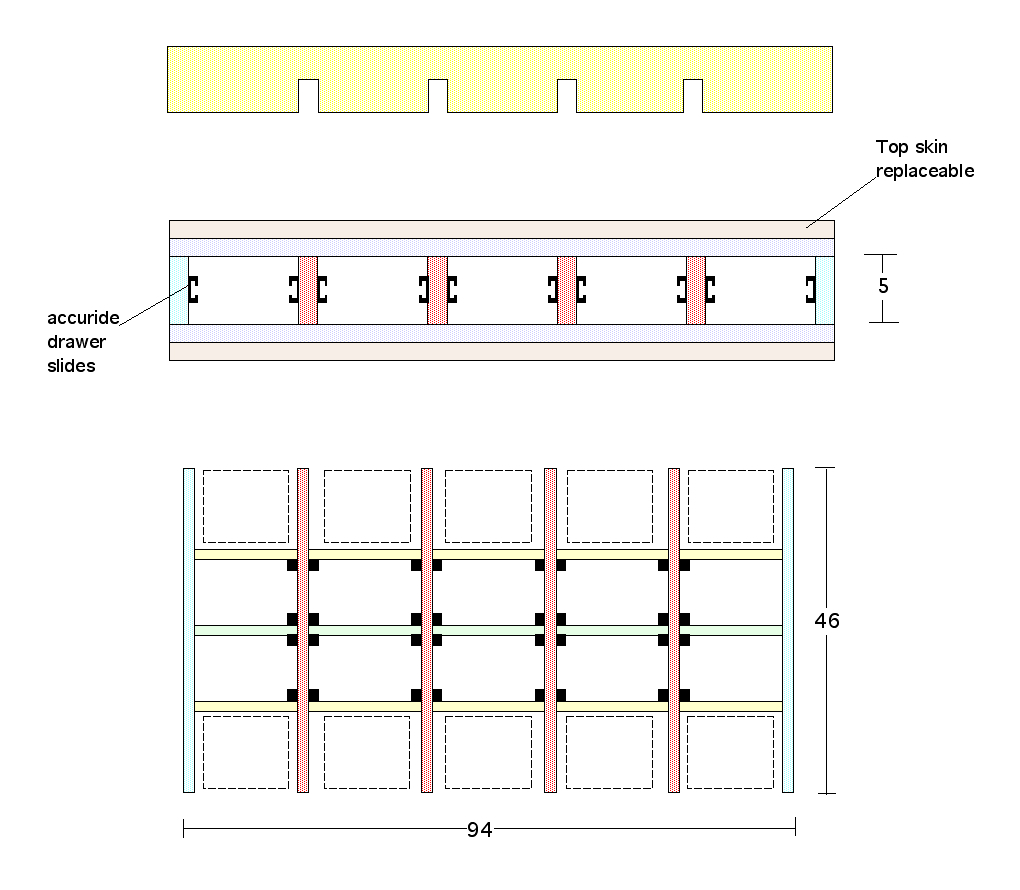Melamine And Water
Is melamine safe for cabinet interiors under sinks? April 18, 2006
Question
I have a customer who would like to use melamine interiors instead of clear coated plywood. He canít make up his mind because he is afraid that if the sinks leak, the cabinet will disintegrate. I have never had a call back about a melamine interior failing because of a leaking sink. Has anyone out there had to replace or repair a cabinet with a melamine interior due to water damage? I donít care what material he chooses but I would like to give him some factual information about the danger of melamine in the sink compartment.
Forum Responses
(Cabinetmaking Forum)
From contributor A :
I used to reface cabs and part of what people wanted was to replace the bottom of the sink base with 1/4" melamine. It looked great after install, but the inevitable holes from the pipes create a sponge for any moisture below the sink. I saw a post on here about a year ago that if you were going to do this, caulk would be one remedy, around the pipes and around the edges where the bottom meets the cabinet. Itís not the look I want in a new kitchen, but itís not our choice. I seem to remember also on this site a water soaking test between plywood and melamine. You might want to check the archives.
From contributor B:
Melamine will absolutely warp under sinks. The last few places I've rented have had concave 1/4" melamine sink cabinet bottoms. The water sinks into the edges, but keep water in the middle for months on end when you unknowingly have a leaking sink, and a tiny flaw will destroy that water barrier. Melamine doesn't belong near water.
From contributor C:
I always Laminate plywood for my kitchens and vanity bottoms. I've had problems in the past in these areas.
From the original questioner:
To contributor C: Can you expand on that? Do you laminate just the bottom shelf? Just in the sink compartment? What about the partitions and the back?
From contributor E:
Plywood isn't waterproof either - there shouldn't be any water there. If you use 1/4" for bottoms it's going to warp, water or not.
From the original questioner:
Yes, I thought 1/4" thick bottoms were skimpy too. I think they may be talking about a repair or skin? As for the water, whether it should be there or not, it is or will be there at some point in the life span of any sink I have ever seen.
From contributor F:
To expand on contributor Cís post - when we do a melamine interior kitchen, we use exterior grade plywood for the complete sink cabinet only and laminate it with a matching laminate. Without removing the edgebanding, it is impossible to tell the laminate interior from the melamine one. We also apply a bead of clear silicone to the joint before assembly and clean the squeeze-out. We do the same thing for prefinished ply sink cabinets as well.
From contributor G:
Over the years of tearing out old cabinets, I have seen melamine cab bottoms that were in great shape. The ones with plumbing cuts in the bottom are a problem because you don't have the protection around the cut area. I see the same problem with finished ply too. The ones that have plumbing coming thru the backs are seldom destroyed by water unless something has caused the melamine skin to be breeched.
From contributor H:
Doug Mockett company has a nice cut to fit under sink liner - SL series metal floor with a rubber gasket at the cabinet sides and a small square front moulding to cover the metal sheet edge at the front of the cabinet. My biggest problem with melamine or ply is the inevitable spills from all the potent stuff stored below the sink. These cleaner chemicals wreck the finish no matter what you use. This nice metal liner is attractive and if installed before you drill up for plumbing makes a very durable and cleanable floor.
From contributor I:
I built 1,000 kitchens and 825 vanities in a New York City apartment complex - all melamine construction, silicone all inside corners and plumbing cuts. I had 12 to 15 call backs, most due to major leaks.
From contributor J:
I have never had a call back on either a melamine or plywood sink base but if exposed to a leak for an extended time, either has a good chance at failing if left untreated. But really, if you use 3/4 inch material for the floor, it would take a while to make that swell. And then it would be limited to the exposed area of the hole, not the whole floor. Two years ago I redid the front of my shop with new doors, windows and siding. On the bottom 2 feet I wanted to do something other than siding, something like raised panels to add a little character to the front. Well, in the mean time I just took some 3/4 inch particle board blanks I use for countertops and screwed them to the front as a temporary solution. Well, needless to say I have been busy and never got around to doing the panels so last week we pulled the particleboard off the front and decided to just paint it. The particleboard has been exposed to the Minnesota winters and summer rains with no paint or protection and it is still very stable. Some of the edges on top and the bottom had swelled, but that was from a heck of a lot more exposure than any cabinet should get and Melamine has the same particleboard core.
From the original questioner:
Thanks to all for the information. This will give a detail oriented client what he needs to make a decision.
